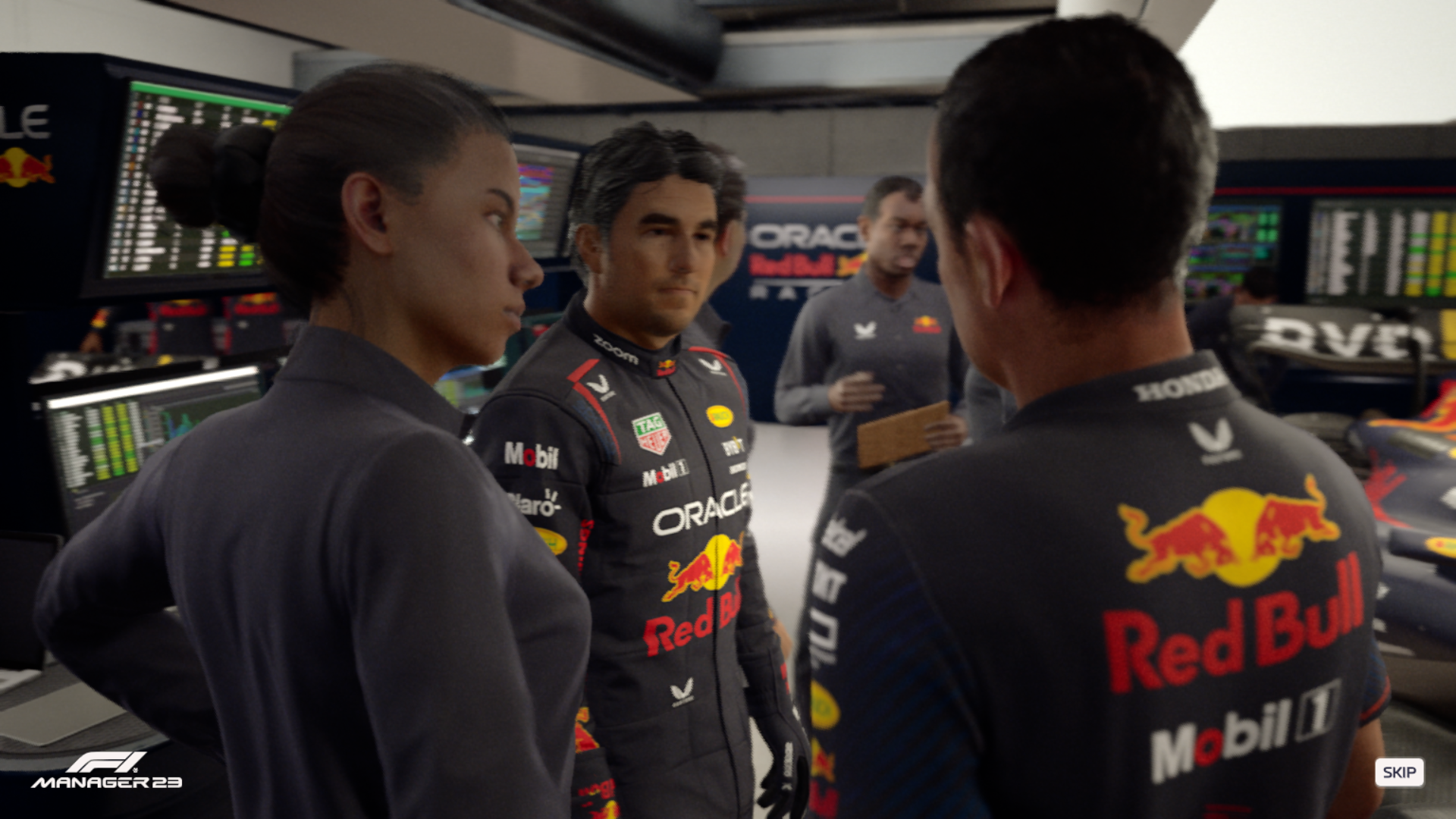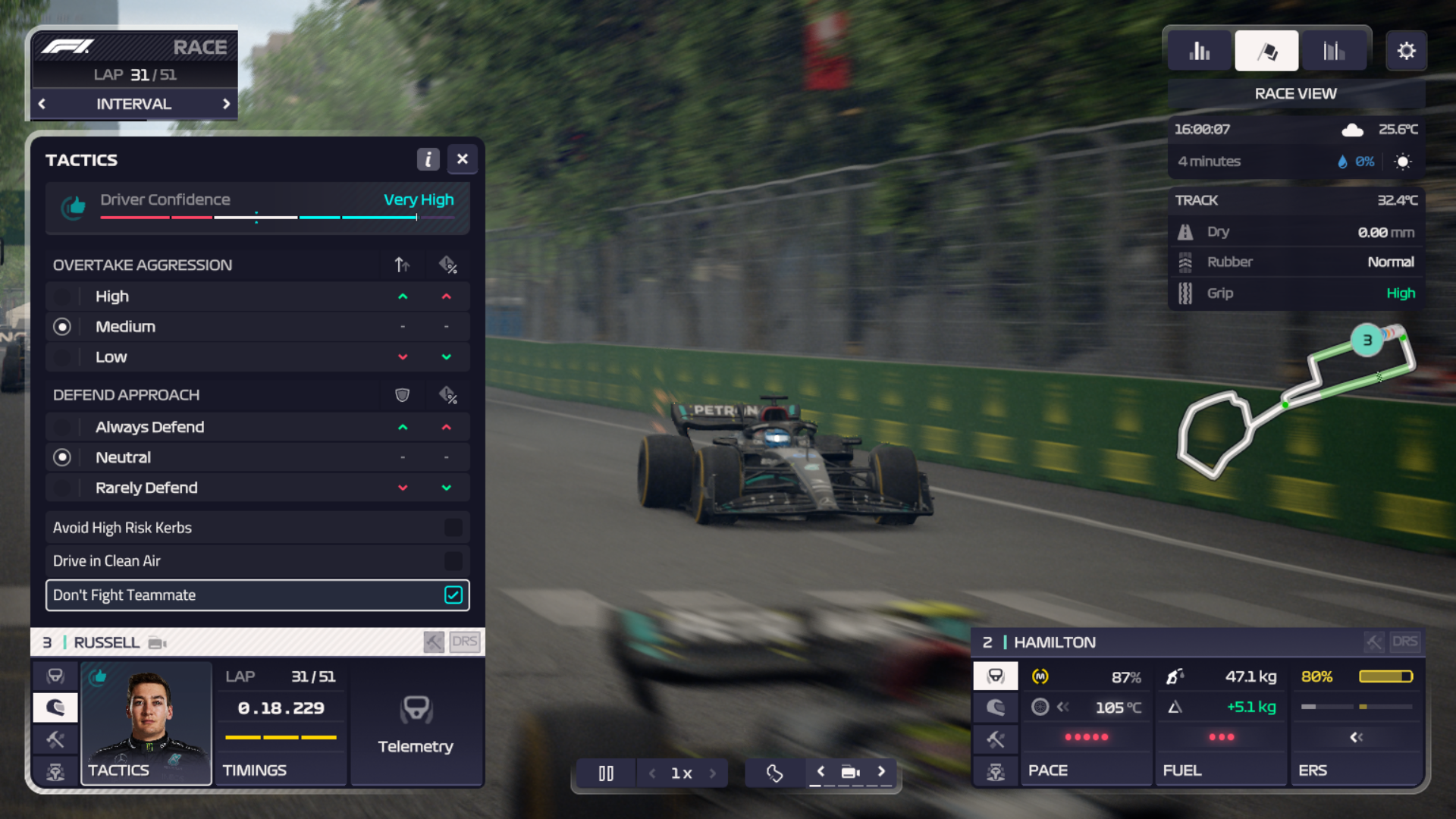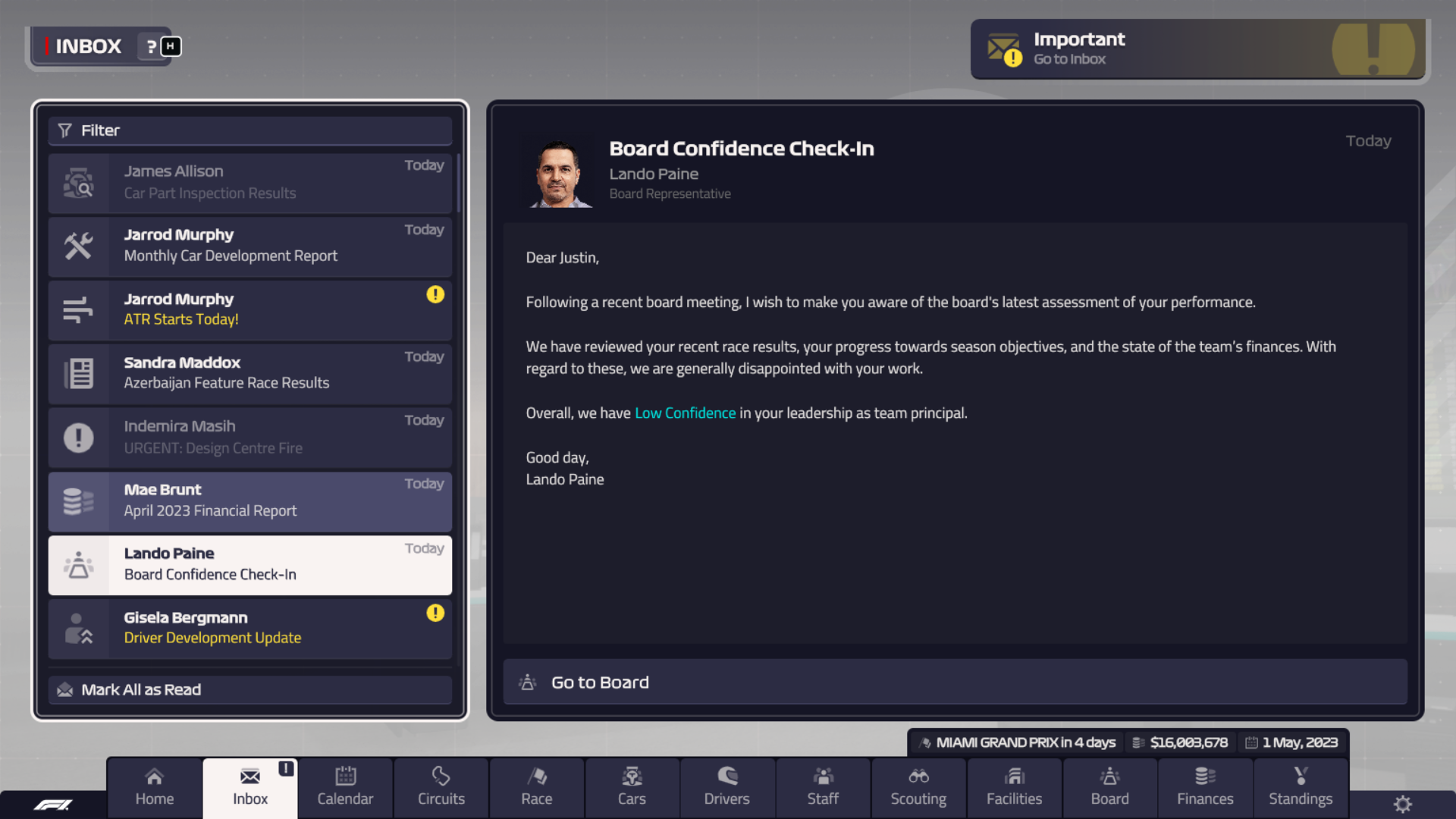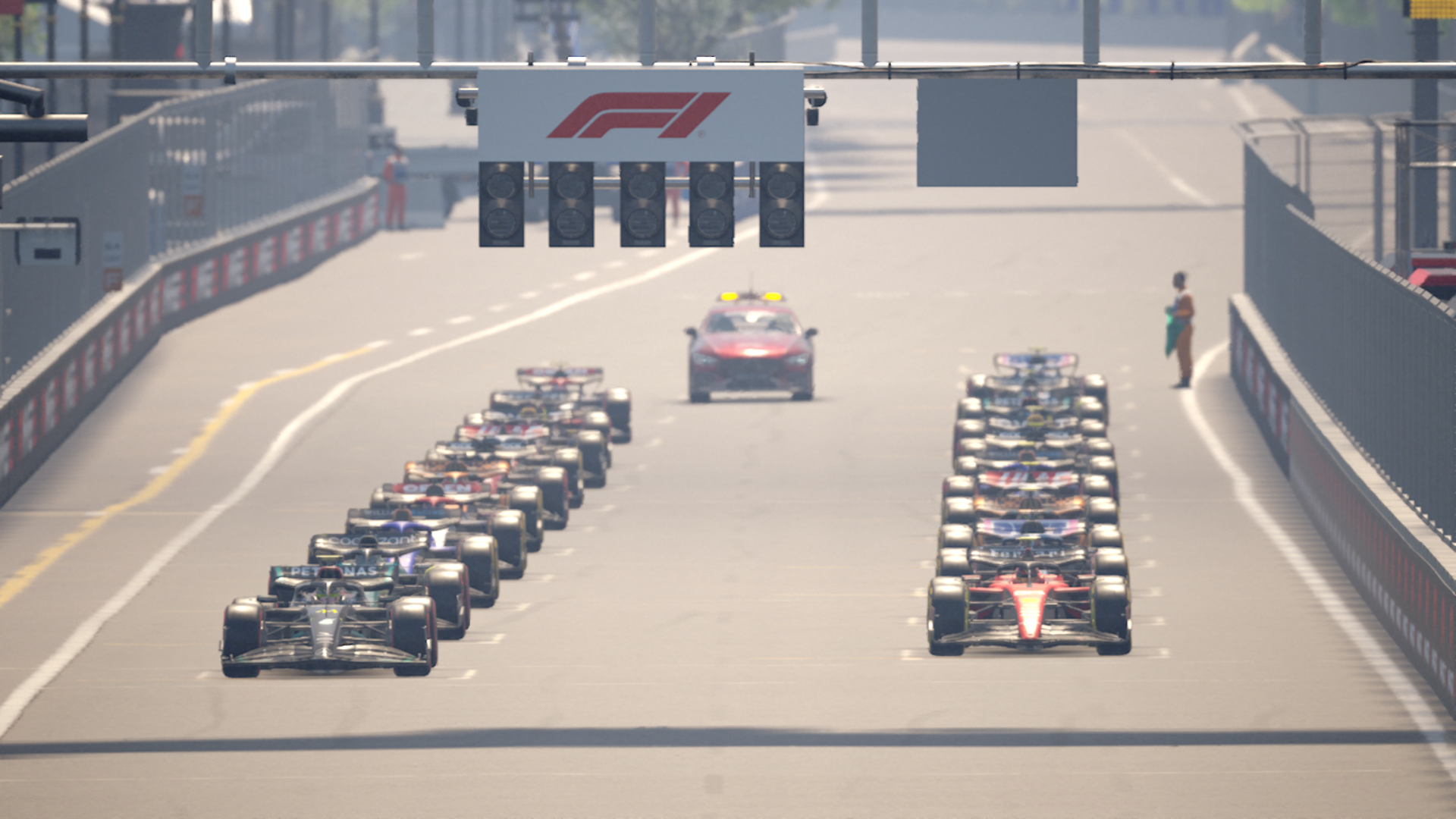Our Verdict
The sequel brings welcome enhancements, but the on-track racing simulation is a let down.
PC Gamer's got your back
What is it? The second entry in Frontier's F1 Manager series.
Release date July 31, 2023
Expect to pay $55/£45
Developer Frontier Developments
Publisher Frontier Developments
Reviewed on RTX 2070, Intel Core i7-10870H, 16GB RAM
Link Official site
Last year's F1 Manager 2022 let us taste the pain of being an F1 team principal, coming away with a newfound respect for Horner, Wolff et al, but also with an air of optimism for Frontier's new series. It was a strong debut and exactly the sort of game that would benefit from a sequel. Well, that's precisely what we have here—but are its improvements the gaming equivalent of Mercedes' 'zero sidepod' design?
The biggest, most visible change is in the way the cars actually drive in the 3D race engine, though it's sadly not for the better. Last year's game saw the field soon settle into a snake and then begin to pass with DRS assistance. In this 2023 version, the 'crocodile' of cars (we still miss you, dear Murray) takes longer to settle, driving two abreast for several corners at a time. Trouble is, thanks to the new multiple lines the AI can take through corners, such navigation in tandem seems to be their preferred state. Cars are frequently fighting wheel to wheel for several corners, which would be amazing in real life (it's the dream, right?), but here it's unrealistic and actually frustrating because it means overtakes rarely stick. Cars just trade places fluidly and will even navigate Monaco's tightest bends side-by-side.

The solution, of course, is to use the three returning boost settings—tyres, fuel and battery—to pull out a gap after passing a rival. You can cheese this to a certain extent by over-fuelling the cars to perpetually gain the fuel boost without being noticeably penalised for the extra kilogram or two. Any tyre or fuel conservation seems to drop you like a lead weight down the order, which doesn't seem very realistic in a sport so famously lousy with tyre deg and 'lift and coast' buzzkills. Going in all guns blazing on shorter stints is the more exciting—and often rewarding—strategy, but the balance doesn't feel right.
Compounding this is the increased frequency of safety cars and red flags. On street circuits like Monaco or Baku, you can easily see several safety car periods and several red flag stoppages all in one Grand Prix. That means a plethora of tyre changes almost free of charge. Obviously, the AI cars do this too, but if you use VSC periods to conserve your systems, you can push for way longer than you would normally when the race is running. And while tyres do overheat, they seem to run just fine for a long while on red temperatures, so you can essentially cane them.
Race days, then, don't feel quite right. But what the game does really well is reward patience and preparation in the other sessions. You can simulate practice sessions and qualifying, but to do so would be to arguably remove the most fun parts of the experience. Sending out your drivers for feedback, tweaking the setup microgame's slider bars to hit all five sweet spots and hearing the real life drivers' voices come over the radio to tell you it's a great balance is so, so cool.

Preparation is king
This driver confidence isn't just skin-deep. It's now an actual stat and it makes a real difference. If you work through your drivers' issues rather than just asking the game to simulate practice sessions for you, they'll perform better all weekend. Important when it only takes a few bad incidents to begin the unravelling of your whole season. This extends to the pit crews, too. Managing them well by resting them, sending them to the gym or focusing practice on jack skills not only brings down your pit stop times, but reduces mess-ups. There's nothing worse than seeing a podium disappear because a tired mechanic fumbled with a wheel nut. You had one job.
Graphically, little's changed over last year's game, with very similar on-screen displays, menus and bloom-heavy effects, with some recycled animations evident in pit scenes. However, the movement of the cars seems less organic than last time out, with cars behaving more unrealistically on turn-in and overall just not moving as convincingly. Stiffer and jerkier, it's not as TV-realistic as it probably should be considering the strong baseline of last year's game.
Added to this is the still-disappointing crash damage. There are some lovely debris-scattering effects, but it's still just front wing breakages and wheels that never come off, no matter how severe the crash. This understated damage is something of a trend throughout the racing genre at the moment, but it's a shame more progress hasn't been made. One new feature that is visually fantastic, however, is the new visor cam. Mirroring real life, the game now lets you see through the visor of the driver of your choice and it looks glorious in motion—the unrealistic cornering masked by the terrifying and awesome sense of speed.

It's also pleasing to see the game runs well on Steam Deck. The small touch screen is a little fiddlier than using a mouse or even a laptop touchpad, but there's full controller support with handy labels above screen furniture to tell you what you need to press. It's a surprisingly seamless transition to on-the-go gameplay, especially with Steam's cloud saves.
Sprint Races are now present and correct, and the shorter format again rewards those push-heavy strategies. But as the sprint disrupts the usual practice schedule, you're often hampered in terms of setup confidence for at least some of the weekend. When you've been conditioned to be all about preparation, you suddenly feel way out of your comfort zone, which is quite disconcerting. Amazing what a single percentage readout can do.
A magic number
Formula 2 and even Formula 3 are now simulated in their entirety, though you can't manage them. You can, however, scout them for new talent and invest in promising young drivers, with the aim of signing them when they're experienced enough for F1. Very handy when you've accidentally insulted Lewis Hamilton to the point where he won't discuss contracts any more and leaves the team. You can also nurture your reserve driver, though seeing their morale drop because the team facilities suck is pretty sad, especially when it's Mick Schumacher. Sorry, Mick. Apparently, the ability to change team mid-season will be patched in before the end of the year but isn't available at present. If you fail right now, you can either reload a save, go back five races, or restart the entire season. Bummer.
Despite the awesome worldbuilding with real names, faces and even voices of key staff members of real teams, the game can sometimes break your immersion by 'misreading' the results. The board is constantly passing judgement on your spending and points haul, but it doesn't seem to consider context. After a run of disappointing 7th place finishes, a win in the sprint race and a 1st and 3rd in the race itself was met with an email the next morning expressing displeasure with our efforts and signing off with a curt 'Good day'. It didn't feel appropriate after the simply stellar weekend where all the team's hard work finally paid off. Stupid boardroom bigwigs.

Aside from the expansive career mode, the new Race Replay mode lets you try your managerial hand at preset scenarios from the real F1 season. You can either take on a specific Grand Prix weekend and try to do better than your real life counterpart, or try Race Moments to drop into a real life race at a pivotal point in order to rewrite history. It's a neat addition that gamifies the experience a little more, which is welcome, but some challenges seem near impossible, like getting Alonso to win at Monaco. Verstappen always comes out ahead and stays there. GP2 engine is clearly the only logical conclusion.
So the main question must be, of course, 'is the game actually fun'? And the answer, despite the flaws, is 'yes'. Though it's worth noting that it does seem a little harder than last year, and with the core experience being fundamentally repetitive, realising you should have done something differently some six races ago is pretty demoralising. The prospect of starting again after 20 hours isn't too bad, though, as it becomes evident where your mistakes were made and righting those wrongs is itself an enticing proposition. But it's a serious amount of free time for a lot of people, and you need to be ready to devote tens or even hundreds of hours to the game if you want to win the championship.
This second attempt isn't going to convince anyone who wasn't won over by the first game, but for newcomers, anyone picking this up is still likely to be impressed by the TV presenters, impressive driver likenesses and depth of team simulation. Still, those key areas of racing and car damage need more obvious improvement next year or the series might start to flounder. Sadly, as with those infamous Mercedes sidepods, the new 'multiple lines' feature really isn't much of a step forward at all and it might be wise to revert to something a little more traditional sooner rather than later.
The sequel brings welcome enhancements, but the on-track racing simulation is a let down.


